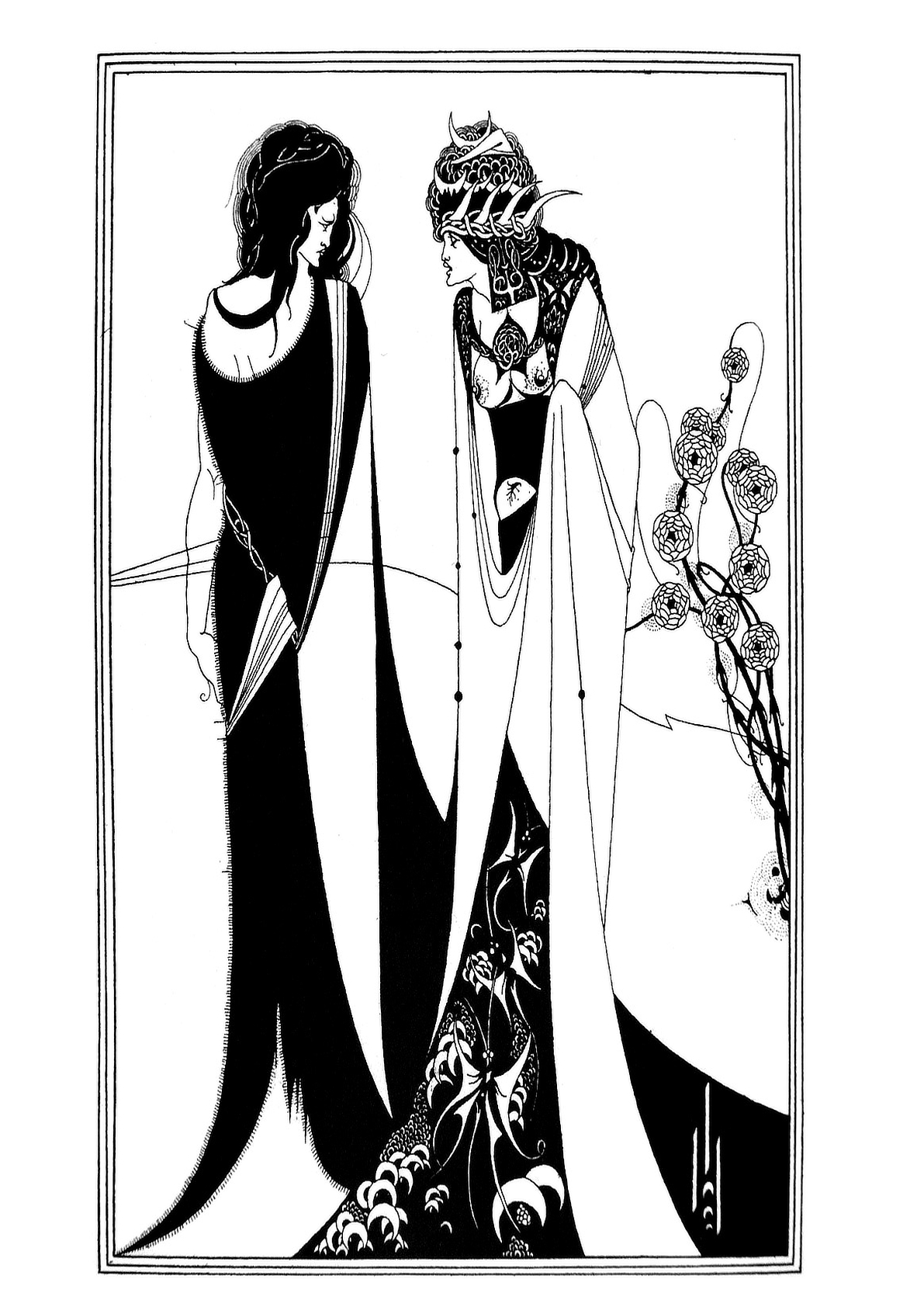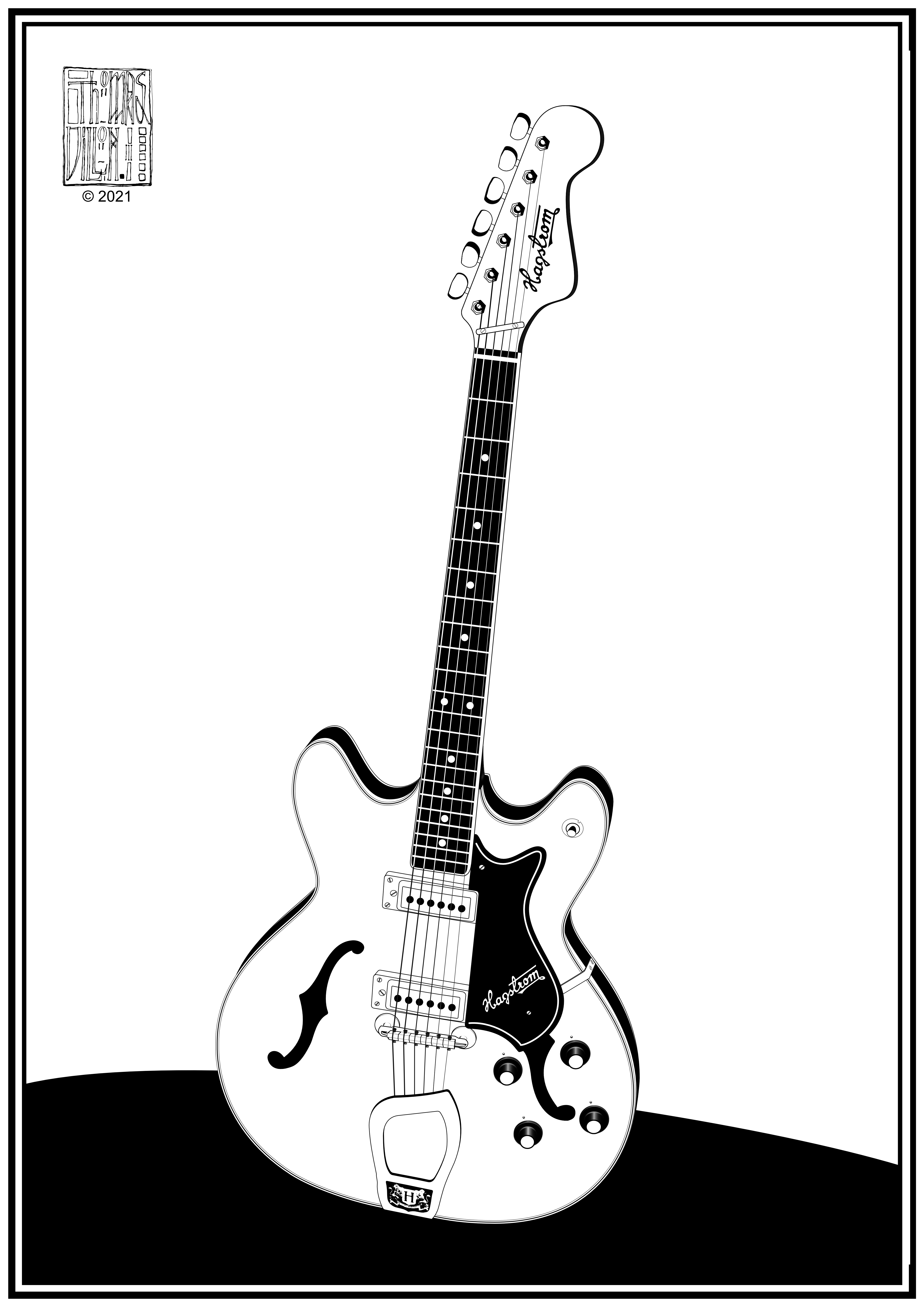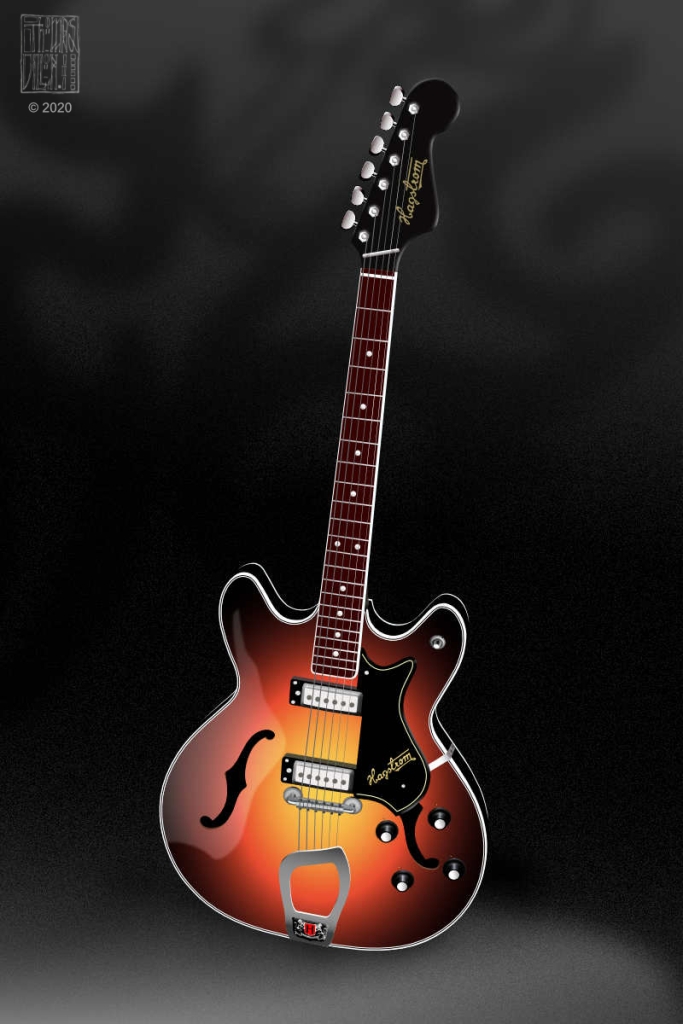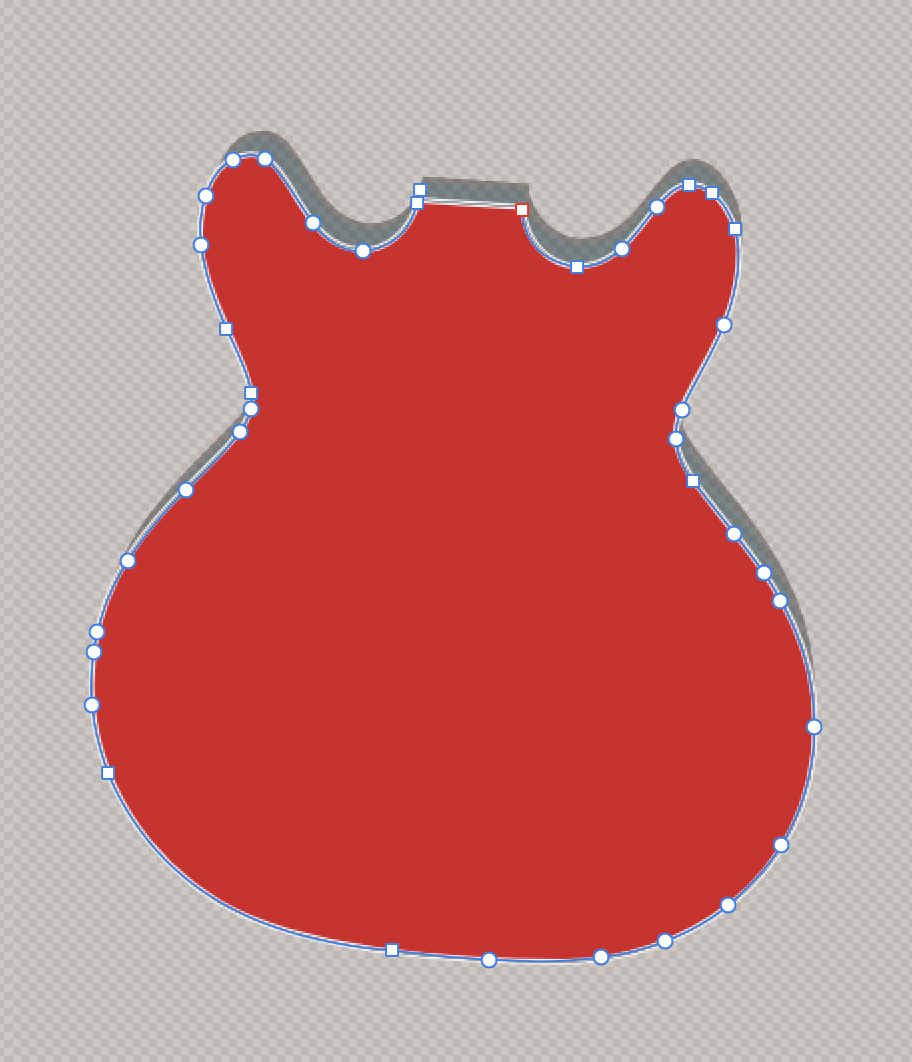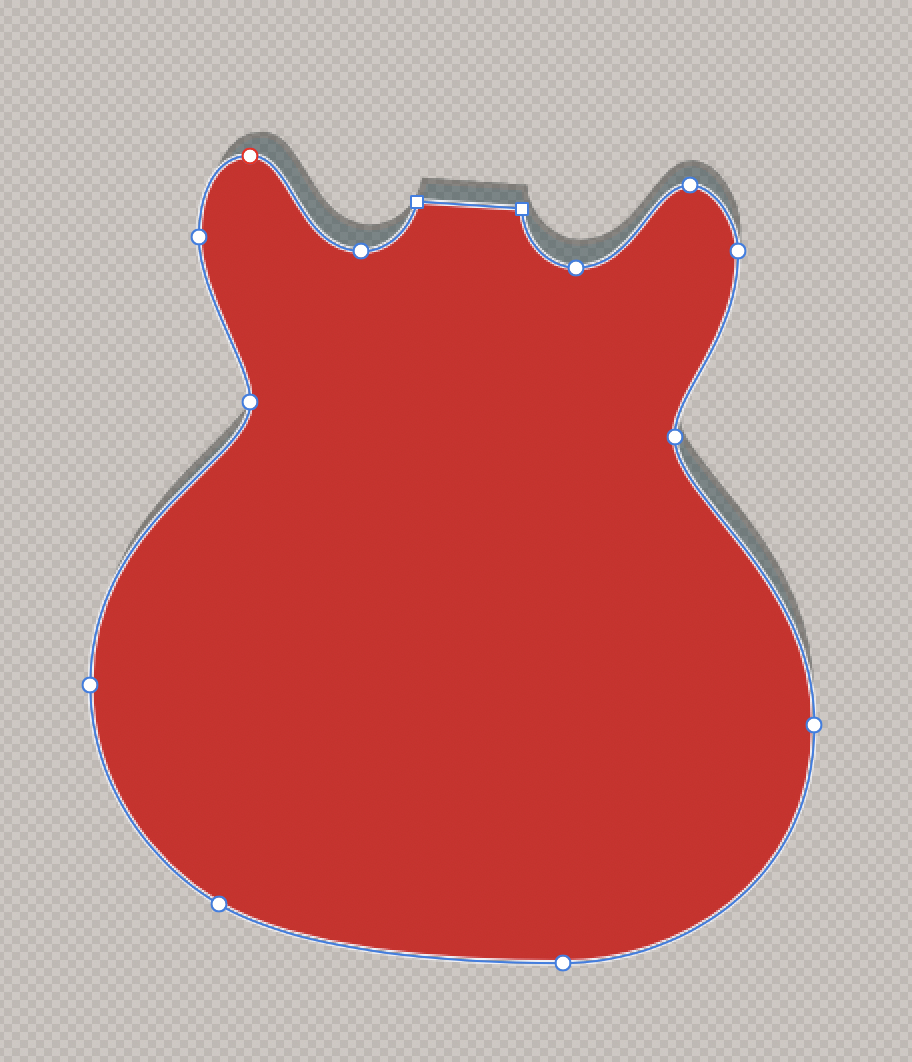I was looking at the BMW Isetta that I did earlier, and it struck me that I had paid too much attention to the colours when what I liked about that car was the form. So I decided to take all the colours away and only use black and white with no shading. Just to see if the form alone would still make a compelling image.
And it did. Because I ended up with an image that evoked Aubrey Beardsley’s very graphical illustrations. However, a german car (even one as cute as the Isetta) is still very ‘form follows function’ and not the slightest bit decadent, romantic or organic, so I looked for something that would suit his approach more.
The Hagstrom Viking, with its sweeping curves and organic form, was a subject more in keeping with Beardsley’s distinctive and luscious style. I adapted it as I did the BMW Isetta illustration.
If Aubrey Beardsley did guitars.
Thank you, Mr Beardsley, for not being at home to Mr Grey.
You can see some of Aubrey Beardsley’s work here https://en.wikipedia.org/wiki/Aubrey_Beardsley


